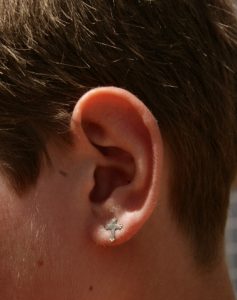Anorexia And Hair Growth
 One of the common symptoms of anorexia is a thing called lanugo – a condition characterized by excessive hair growth in certain areas of the body.
One of the common symptoms of anorexia is a thing called lanugo – a condition characterized by excessive hair growth in certain areas of the body.
Lanugo is actually a sign that the body is trying to protect itself during the starvation process by trapping in heat that muscles and fat can no longer provide. Not all women – or men – will develop lanugo, but it can be a psychologically troubling side effect of having an eating disorder.
Where it occurs
This type of hair is similar to what people call “peach fuzz,” and it occurs in normal places like the arms or legs – but it can also appear in areas where there is usually very little hair growth in women, like on the face, neck or back. The hair may be light or dark, depending on the person’s natural hair color.
Who gets lanugo
Babies get lanugo hair, but they tend to shed it within a few months of birth. Anorexics who have dropped below a healthy weight for their height and age may also develop it, even if there still appears to be fat on the body. It is a symptom of starvation and malnutrition in adults, so anyone lacking proper nutrients and food can develop it.
Treatment
The first step in treating lanugo is to address the condition that has caused it. For anorexics, the hair growth might be reversed after receiving proper nourishment and nurturing the body back to a healthy place. For others, the lanugo might be a permanent result of the disruption to hormones and organs that regulate body processes.
If you suspect you have lanugo, it’s best to see a qualified medical professional to make a proper diagnosis and assess your treatment options.
Source: Medical Dictionary
 Eating Disorder Self Test. Take the EAT-26 self test to see if you might have eating disorder symptoms that might require professional evaluation. All answers are confidential.
Eating Disorder Self Test. Take the EAT-26 self test to see if you might have eating disorder symptoms that might require professional evaluation. All answers are confidential.